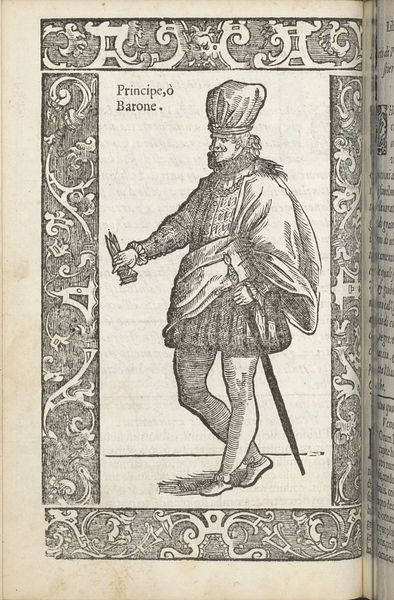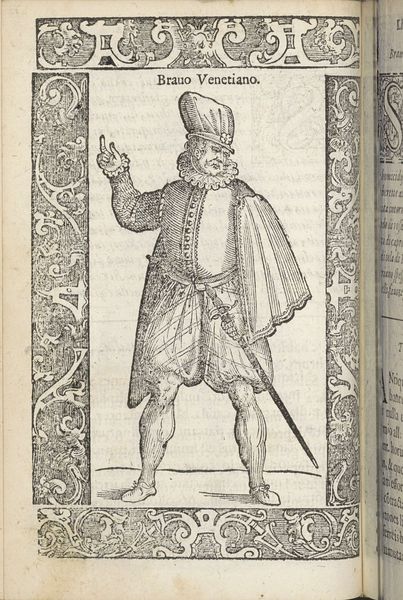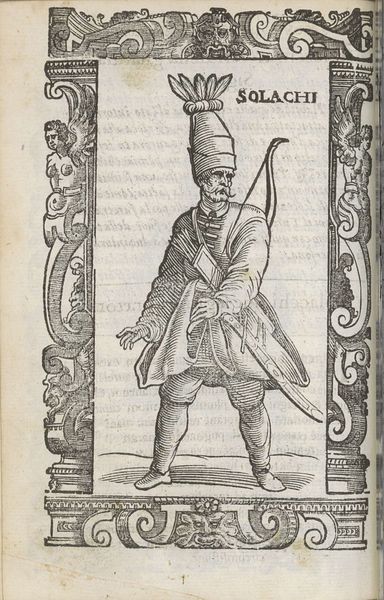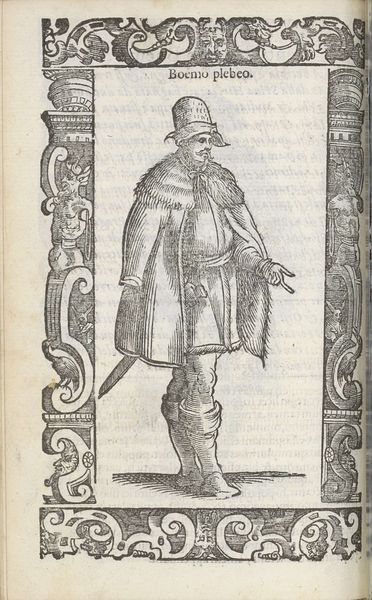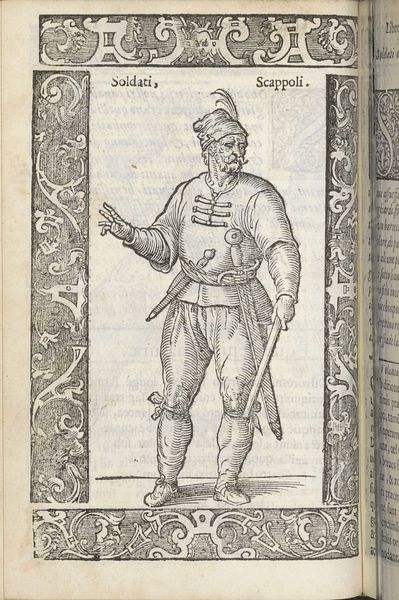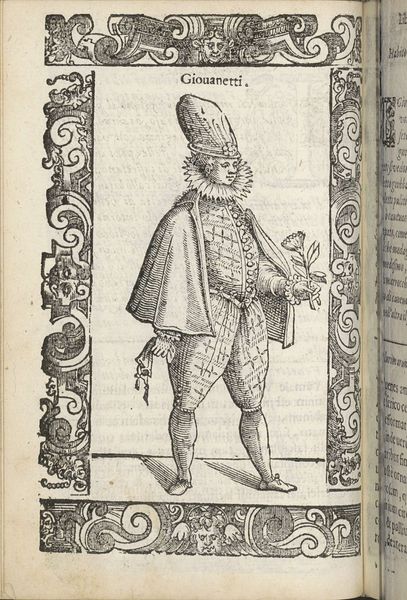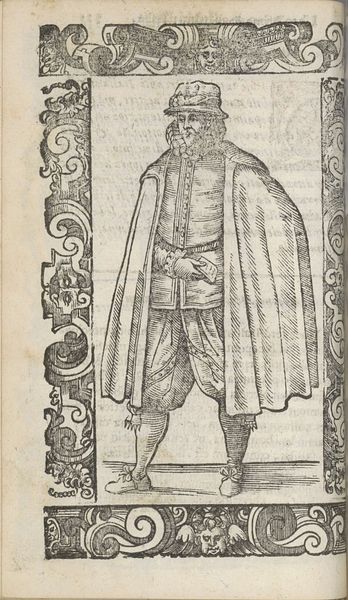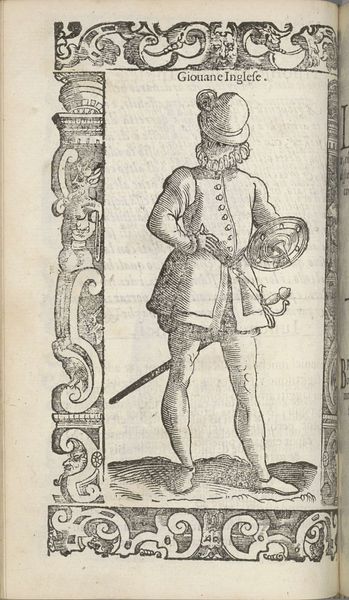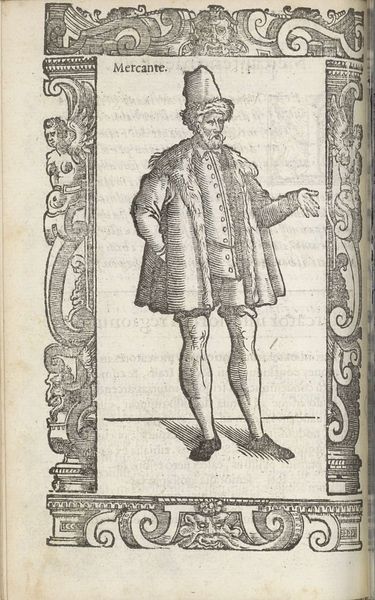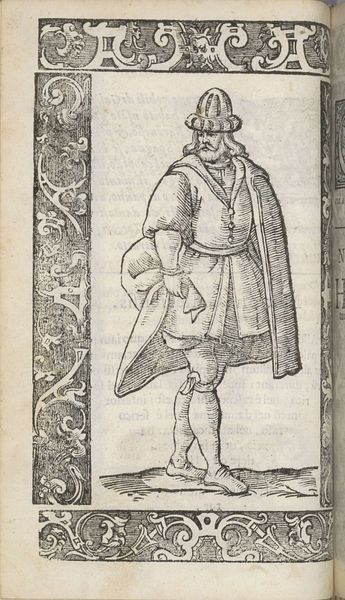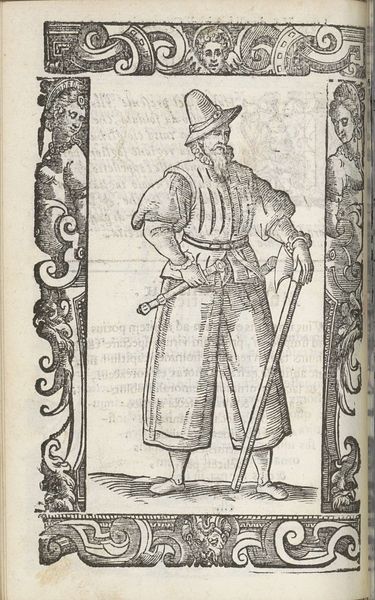
drawing, pen
#
portrait
#
drawing
#
quirky sketch
#
pen sketch
#
sketch book
#
mannerism
#
figuration
#
personal sketchbook
#
sketchwork
#
pen-ink sketch
#
pen work
#
sketchbook drawing
#
pen
#
history-painting
#
storyboard and sketchbook work
#
sketchbook art
Dimensions: height 167 mm, width 125 mm
Copyright: Rijks Museum: Open Domain
Curator: Today, we're looking at Christoph Krieger's pen drawing, "Cittadini," created in 1598. Editor: My initial impression is a sense of curiosity. It's rendered with such fine lines, capturing the detail in his elaborate garments, yet there's also something quite unassuming about it. Is it intended to be viewed simply as illustration? Curator: Well, Krieger was working in a period of intense social stratification and transformation. The title itself, "Cittadini"—citizens—invites questions of who was considered a citizen and the rights associated with that identity. His clothing is elaborate but distinct, suggesting a particular class within society. What were the processes of creating these images and the role of artisans during this time? Editor: Exactly. It's also important to consider the economics of the drawing’s production. Krieger used a pen, humble tool. Was he creating the image specifically for reproduction in some printed medium? Consider the way pen lends itself to repeatable and replicable gestures. It could make drawing less precious. Curator: Absolutely. The drawing could have served many purposes, perhaps related to establishing a collective or shared image of the citadinni—an ideal, a goal of representation for urban citizenship during an era when class and status defined one’s political standing, and thus one's very selfhood. Were Krieger’s sketches intended to affirm identity and promote or protest cultural value? How did these symbols operate? Editor: The figure's posture also interests me. There’s a distinct way of standing present. To really examine the artwork, it will require careful consideration to tease out not only meaning, but the very means and modes that produce representation as a type of symbolic labor. How might that impact a modern sense of identity? Curator: Examining "Cittadini" today compels us to investigate power dynamics as relevant intersections, exploring historical class disparities and contemporary notions of citizenship, class, and political participation. Krieger’s choice of medium serves as a reminder that art's capacity to mirror and transform social values is ever unfolding. Editor: Ultimately, to reflect on "Cittadini" leads us to remember that it embodies a dynamic between material limitations and resourceful, meaningful craftsmanship and that what one produces represents a cultural story as well.
Comments
No comments
Be the first to comment and join the conversation on the ultimate creative platform.
